Expert: Drone over Vilnius could be Lukashenko acting for Kremlin
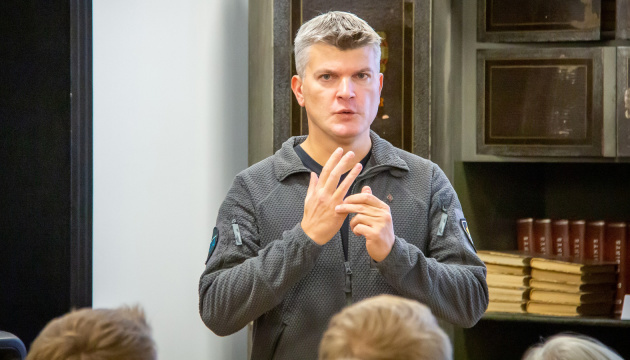

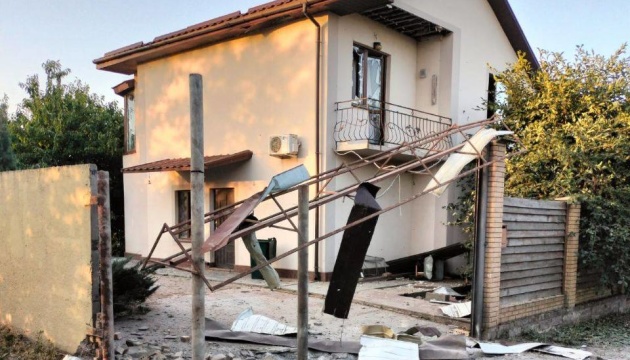
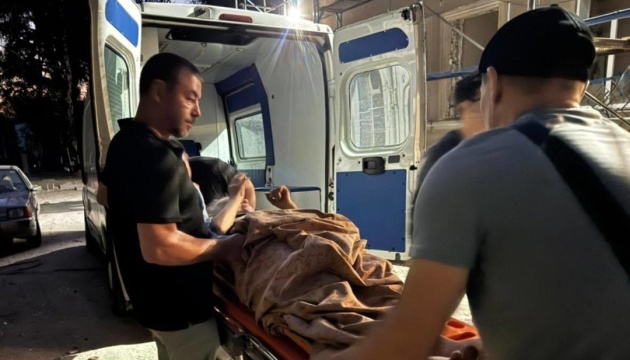
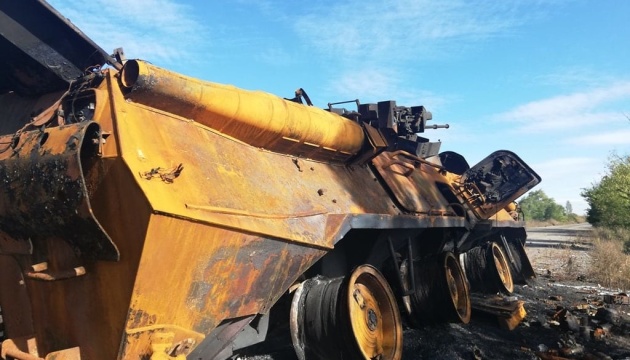
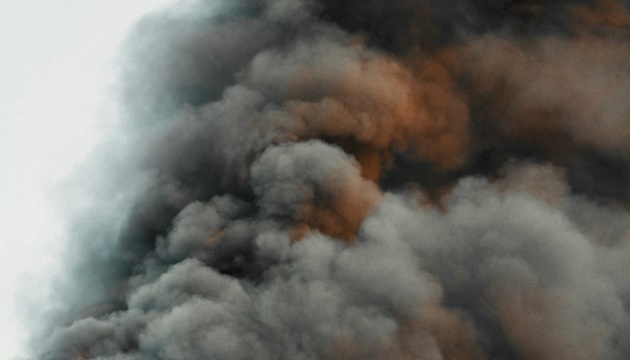
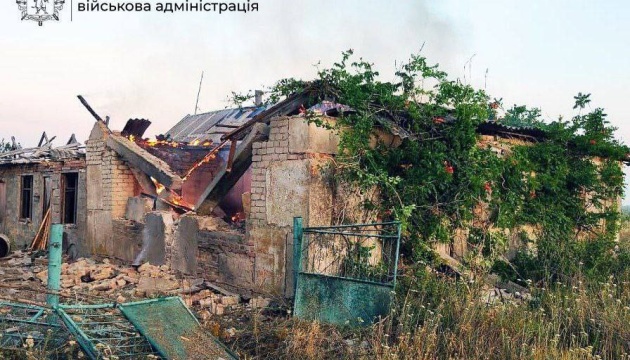
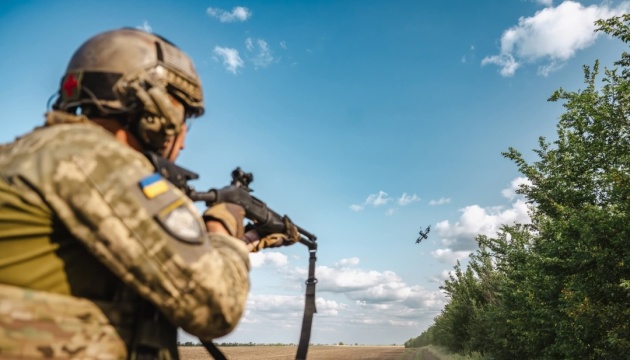
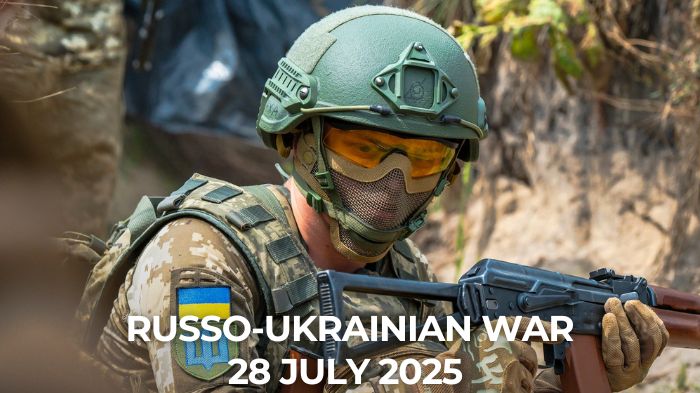
 |
Man wants to counter China by letting Russia dismember Ukraine, forgets they’re allies. Pentagon’s Undersecretary Elbridge Colby crafted America’s China strategy. Beijing couldn’t be happier. |
 |
Spain Ukraine military aid: Patriot missiles, Leopard tanks—plus surprise Chornobyl solar plant. Missiles and tanks are only part of Spain’s military aid to Ukraine: the past year also brought troop training, demining, sanctions and a solar plant in Chornobyl. |
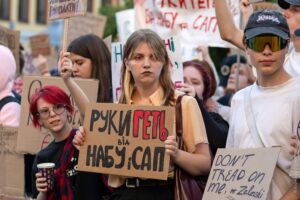 |
19 Ukrainian protest signs that are pure art (and also completely unhinged). Ukraine’s “cardboard revolution” proved teenagers can save democracy with markers, literary references, and perfectly placed f-bombs. |
 |
“It’s high time” for Ukraine’s tanks as Russia encircles Pokrovsk. Russian units are closing a ring around Pokrovsk, and analysts say only Ukraine’s armored reserves can break it. |
Resistance never sleeps: Ukrainian partisans strike Russian rail and freeze ammo convoys. A relay box blew, and the wheels of war ground to a halt.
Hackers attack Russia’s largest state airline, disrupting dozens of flights. They sign off “Glory to Ukraine! Long live Belarus!”. The hackers claimed year-long access to Russia’s flagship airline before destroying infrastructure, telling Russian security services “you are incapable of protecting even your key infrastructures.”
Frontline report: Ukraine teaches Georgia battle-tested drone warfare during NATO exercises after both lost territories to Russia. Georgia appears poised to follow Syria and Azerbaijan’s playbook, seizing territorial gains while Russian forces remain preoccupied with Ukraine.
Ukraine just took back Kindrativka and is pushing into Russian flanks in Sumy. Weeks into Russia’s push across the Sumy Oblast border, Ukrainian forces are holding positions and putting pressure on the enemy’s main axis.
HUR: Kremlin’s drive to reabsorb former Soviet states threatens freedom across Eurasia. Ukraine’s fight for EU integration stands as a barrier to Moscow’s plan to unify neighboring countries under its thumb.
British expert warns Russia could blow up six reactors at Europe’s largest nuclear plant if war turns against Kremlin. Six reactors, enough to power Finland for a year, could be weaponized into a radioactive bomb.
Europe promises secret weapon for Ukraine—but can’t outproduce 1,020 Russian missile barrage. As missile numbers climb, Ukraine’s survival depends on hitting the source.
Drone crosses second time in month into NATO territory from Belarus — Russia’s key ally. Video footage suggests the aircraft may be a Russian “Geran” or “Gerbera” type based on its characteristic sound signature.
While Russia kills 232 Ukrainian civilians in one month, its citizens sip wine on French Riviera—with EU visas in hand. Hotel bookings by Russians in France and Italy are up 19% — even as their missiles devastate Ukraine.
Trump’s ceasefire clock: 10 days for Putin to stop war in Ukraine, not 50 or face oil sanctions. Trump signals a turning point: no more patience for Putin’s war of attrition.
With infrastructure in ruins and winter ahead, Ukraine finds gas power where Russia once ruled. The Trans-Balkan corridor becomes Kyiv’s newest artery in the war for energy survival.
Investigation: Russia blew up 53 Ukrainian POWs in Olenivka prison, then honored killers with medals. The same men who rigged the barracks were officially praised for “combat duties.”
“Ah, this one’s dead? Good,” said Russian Olenivka prison chief — and continued sipping coffee. As wounded Ukrainian soldiers begged for help, their jailers watched and smoked.
Toddler hospitalized with shrapnel wounds after Russian overnight attack. The 3-year-old child was among eight civilians injured when a Russian drone struck a residential complex in Kyiv.
As Russia burns billions on war against Ukraine, Minsk’s depending economy is approaching its bottom. An 8.1% drop in farming and a 70% plunge in exports to Russia choke the economy of Moscow’s satellite.
Sanctions fail to hit 200 companies feeding Kremlin’s fake reconstruction system in occupied territories of Ukraine. Russia’s occupation profits flow freely through a maze of unsanctioned shell companies.
Russian prestigious School of Economics opens first master’s programme on circumventing Western sanctions. A Moscow educational institution has launched a two-year program, costing $6,000 per year, designed to prepare students for work in state corporations navigating international restrictions.
Investigation exposes Putin’s media network playing dress-up as Global South agency. A video news agency Viory that launched in Abu Dhabi claiming to represent the “Global South” is actually a rebranded version of Ruptly, the Berlin-based footage supplier that was part of Russia’s state media network RT
Russia starts regular passenger flights to North Korea. The inaugural flight coincided with North Korea’s Victory Day celebrations, where leader Kim Jong-un referenced Russia’s participation in “anti-imperialist struggle.”
Read our earlier daily review here
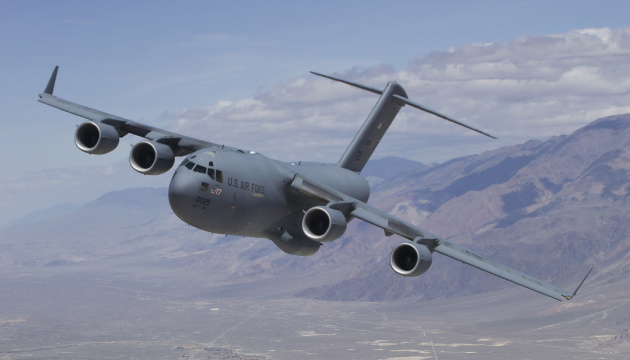

© Copyright 2025 The Associated Press. All rights reserved
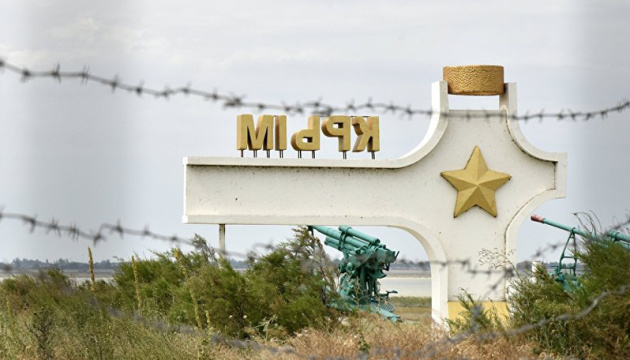
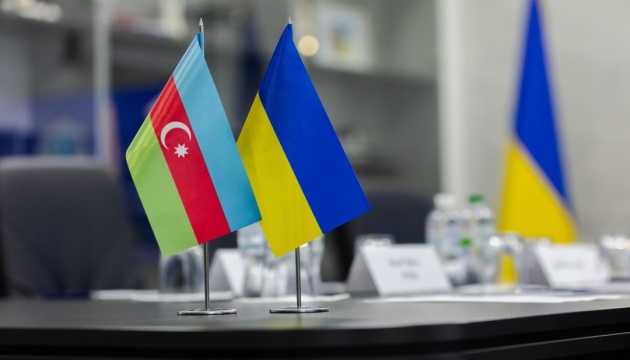
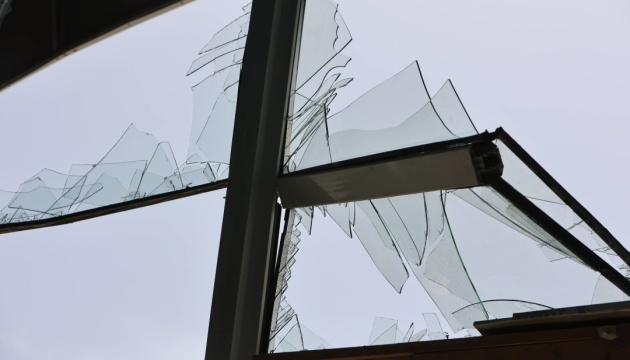


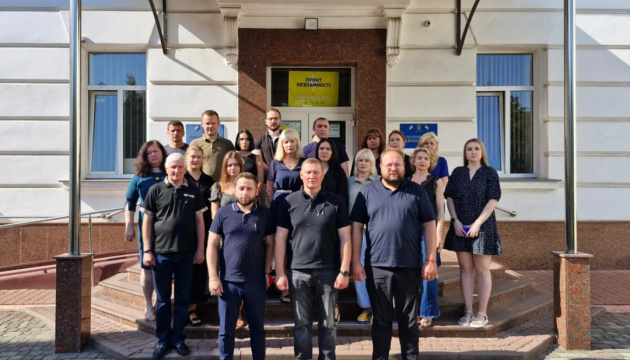
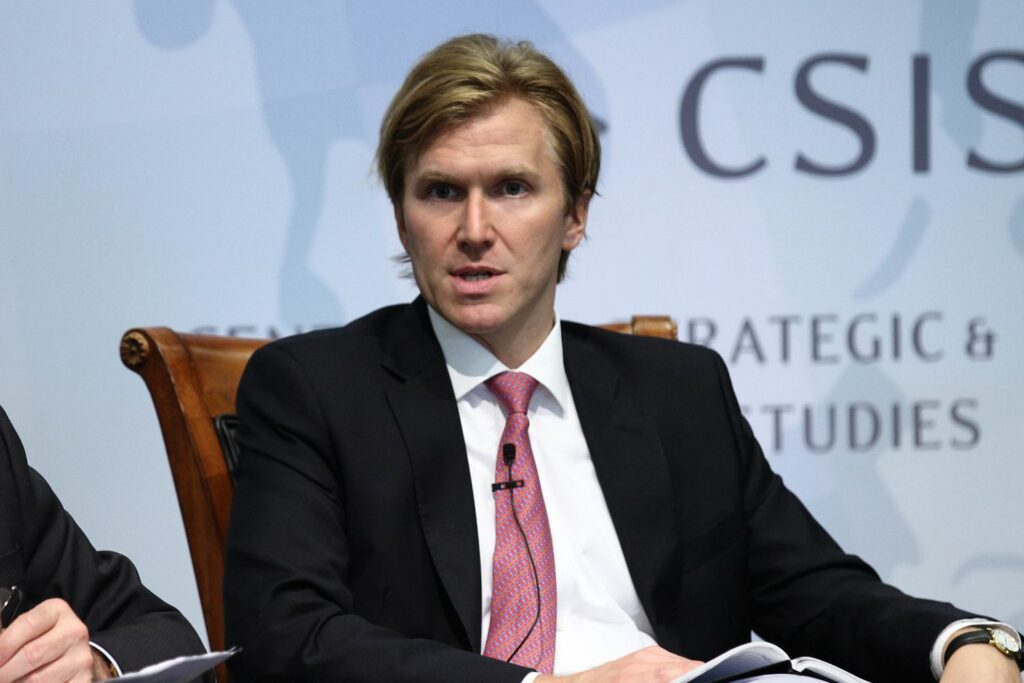
“Let’s put out this raging fire,” declared the fireman – then he grabbed a can of gasoline.
That, in essence, is Elbridge Colby’s strategy for contesting China’s rise: letting Russia – Beijing’s most dangerous partner and increasingly a vassal – dismember Ukraine with impunity.
In his widely cited book The Strategy of Denial, Colby argues that America’s overriding priority must be to prevent the People’s Republic of China – which he identifies as a hostile hegemon – from dominating the Indo-Pacific. That requires a narrow, disciplined focus on deterrence, building trust with allies, and showing adversaries that American commitments are ironclad.
And yet, Colby, who wrote this magnum opus, cannot possibly be the same person who threw Ukraine under the bus – to China’s very public delight. No wonder Sen. Mitch McConnell called his ideas “geostrategic self-harm” when voting against his confirmation.
A bombshell Politico investigation revealed that the architect of the recent weapons halt to Ukraine was none other than Undersecretary of Defense for Policy, Colby. The official justification was concern over stockpile levels – a legitimate consideration that might warrant careful management of aid flows.
But this rationale collapsed under scrutiny. Military analysts inside the Department of Defense concluded that continuing aid to Ukraine would not compromise American readiness.
The decision also undercut the White House’s stated goal: a ceasefire agreed to by both parties. Ukraine accepted the proposal months ago. Russia didn’t just refuse, it mocked the peace talks and made Washington look weak and indecisive.
On 4 July, following the Trump-Putin phone call, Russia hit Ukraine with the largest drone attack of the war. 11 missiles and 539 Russian-Iranian Shahed drones were fired at Kyiv over a seven-hour onslaught. This record was shattered just five days later, on 9 July, when Russia launched 728 drones and 13 missiles in another massive assault.
These attacks, it turns out, are made possible by China.
According to Bloomberg, 92% of the foreign components found in the killer drones terrorizing Ukrainian cities are of Chinese origin. And on 23 July, The Telegraph reported that Russia now deploys fully Chinese-made drones to prosecute its criminal war in Ukraine.
On the very day Colby’s meddling with congressionally mandated weapons deliveries made headlines, Wang Yi – the top foreign policy official in the Chinese Communist Party – laid Beijing’s position bare: “China cannot allow Russia to lose the war in Ukraine,” he told European diplomats in a closed-door briefing.
China enjoys a favorable view among 81% of Russians, while 71% express hostility toward the EU. Ukraine and the United States are the only countries regarded with greater contempt.
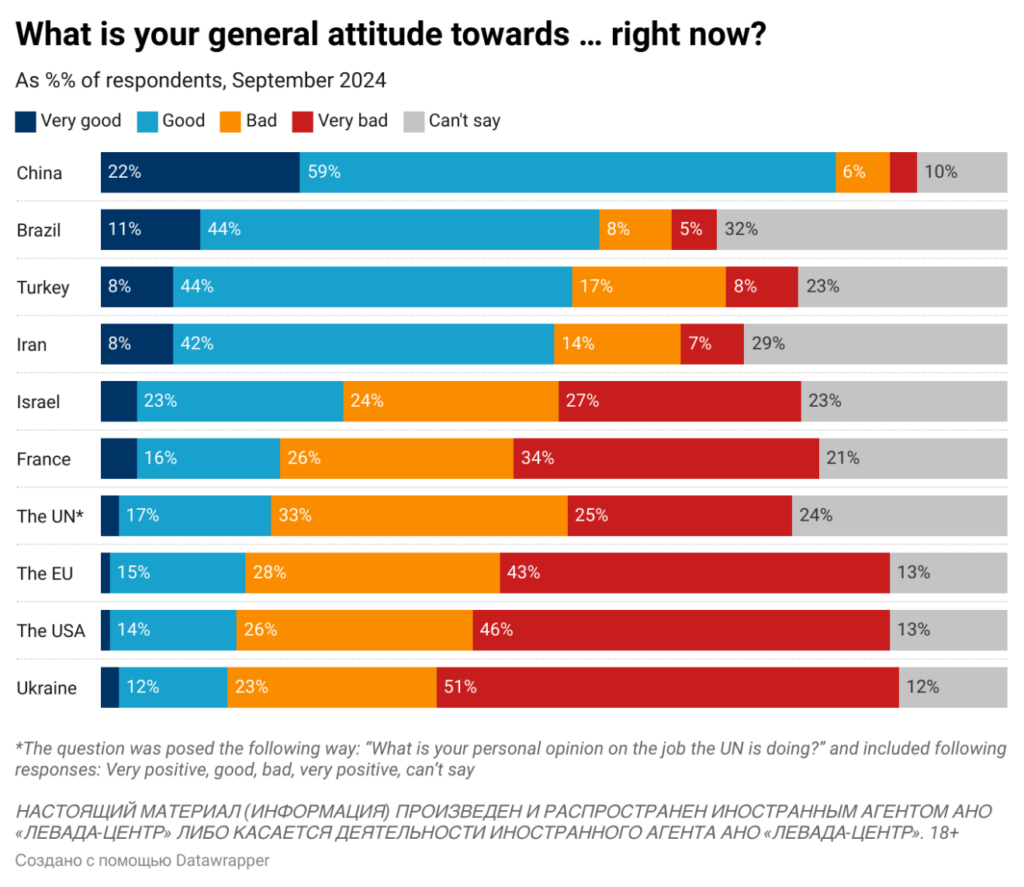
The idea that Washington can somehow coax Russia into abandoning China and joining the West runs counter to everything we know about the Kremlin’s imperial legacy. Moscow’s legitimacy rests on denying agency to the peoples it subjugates – from serfs during tsarist times to the inhabitants of the Russian Federation today.
America’s Constitution begins with a phrase the Kremlin sees as a mortal threat: We the People. The freedom and dignity that Americans and Europeans wish for the many Peoples of Russia are exactly what threatens Moscow’s system of oppression and subjugation.
Since 2022, Colby has argued for sacrificing Ukraine on the altar of “American interests.” But what lies ahead is the loss of American security to wishful thinking and incompetence.
By crippling Ukraine, Colby is doing precisely what his doctrine warned against: enabling the consolidation of a China–Russia-Iran-North Korea axis that threatens US interests far beyond Eastern Europe. American deterrence hinges on reliable commitments. So what message does a cut-off to Ukraine send to Taiwan, Japan, or the Philippines?

America forfeits credibility by broadcasting indifference and betraying people who just want to defend their home and not be murdered by Russia. The erosion of resolve is how great powers stumble into wars they try to avoid.
Ukraine has already shown that denial works. With the right tools, it has sunk much of Russia’s Black Sea Fleet, retaken territory, and exposed the limits of Russian air power – most recently in Operation Spiderweb, which destroyed a row of Moscow’s bombers deep behind enemy lines.
Putting the moral case aside, aiding Ukraine is a strategic imperative under Colby’s own framework. Moscow reintroduced overt territorial conquest into modern geopolitics. In such a world, US force projection in East Asia grows harder and exponentially more expensive to sustain.
While Washington burns through nearly a trillion dollars each year on defense, the $40 billion the United States sent annually to Kyiv since 2022 is a minor fraction of that sum – and a bargain, when you consider the cost of letting deterrence collapse.
The truth is, abandoning Ukraine won’t deny China’s rise; it will enable it. It won’t isolate Moscow or draw it closer to the West; it will bind the Kremlin even more tightly to Beijing. It won’t preserve US leadership, it will shred the very credibility on which that leadership depends.
In Colby’s hands, the strategy of denial has morphed into a doctrine of permission. Vladimir Putin and Xi Jinping couldn’t have asked for a better gift.
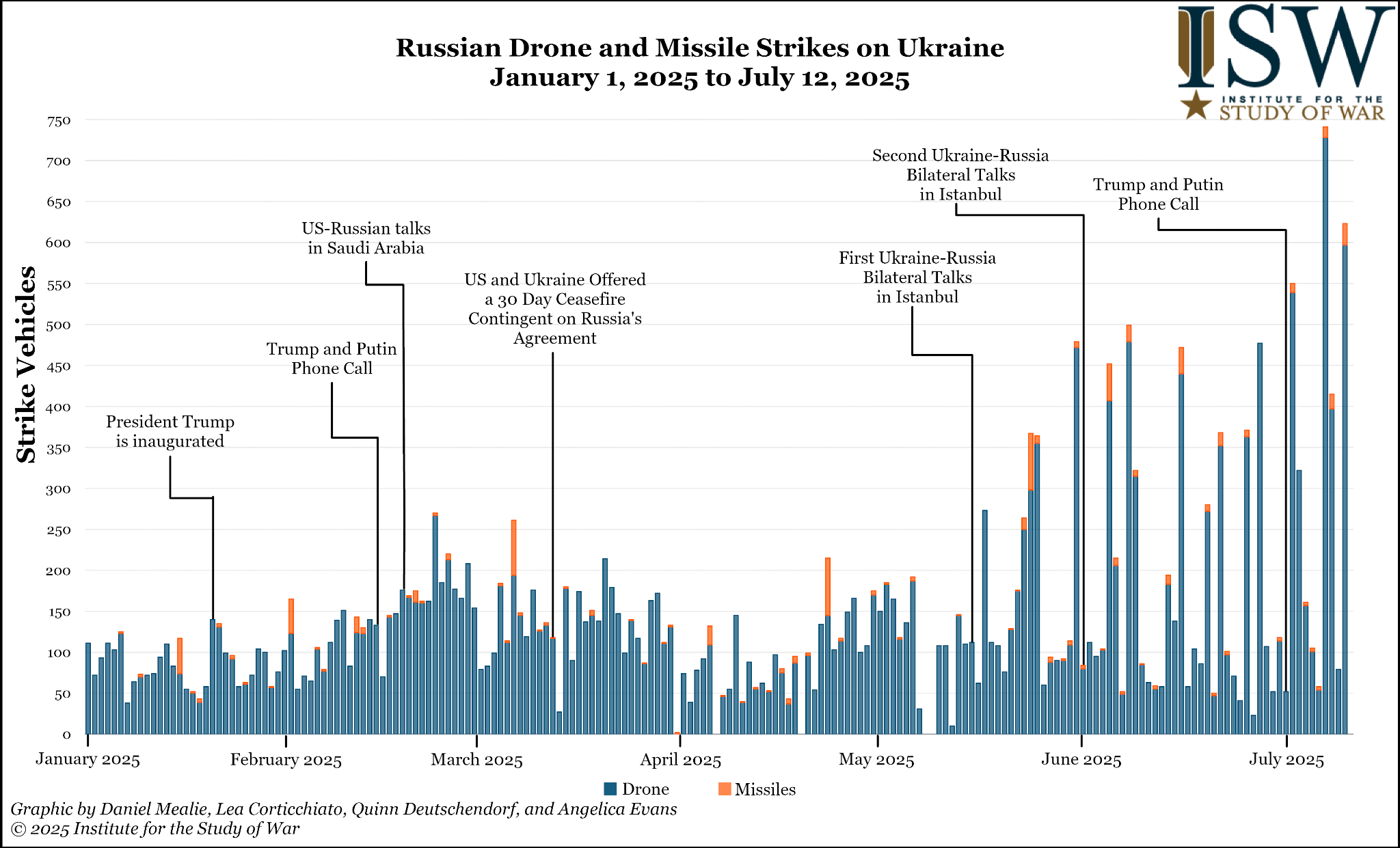
Editor’s note. The opinions expressed in our Opinion section belong to their authors. Euromaidan Press’ editorial team may or may not share them.
Submit an opinion to Euromaidan Press


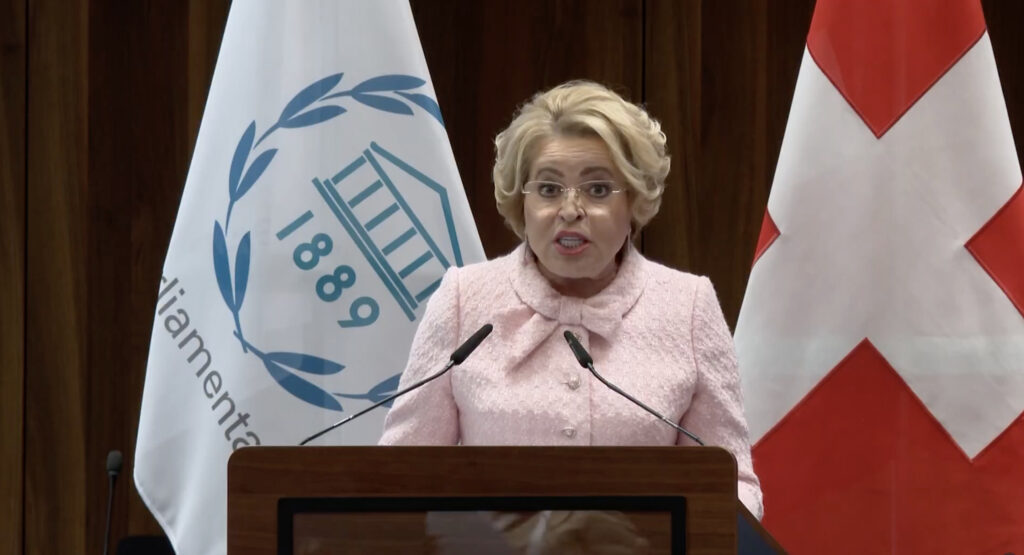
Why would Ukraine’s foreign ministry call an international conference attendance “disgraceful”?
The answer sits in a Geneva conference hall where Valentina Matvienko, head of Russia’s Federation Council, addressed fellow parliamentarians this week at the Inter-Parliamentary Union conference. Ukrainian Foreign Ministry spokesman Heorhii Tykhyi didn’t mince words: her place is “in the dock, not at international conferences.”
From the podium in Switzerland, Matvienko invited foreign colleagues to visit Russian-occupied Ukrainian territory.
“Please come to Donbas, look at the ‘Alley of Angels,’ which is dedicated to the memory of these murdered children,” she told the assembly an old Russian propaganda narrative. “Russia was forced to intervene to stop this bloodshed.”
This narrative presents Russia as a rescuer and frames its aggression as a “humanitarian mission” while providing highly questionable or fabricated stories.
How did a sanctioned Russian official even reach Switzerland? The country joined EU sanctions targeting Matvienko and other Russian officials. But Swiss policy includes a loophole—sanctioned individuals can enter when participating in international organizations headquartered there.
Matvienko didn’t travel alone. Her delegation included State Duma Deputy Chairman Pyotr Tolstoy and “LDNR” leader Leonid Slutsky—multiple members appear on Western sanctions lists connected to Ukraine’s invasion, Radio Free Europe reported.
A Russian official who spreads propaganda about Ukraine was allowed to present at an international conference in Switzerland this week.
— Euromaidan Press (@EuromaidanPress) July 28, 2025
Despite being on EU sanctions lists, Valentina Matvienko reached Geneva through a loophole allowing sanctioned individuals to participate in… https://t.co/lXkMHu8RsL
Ukraine’s foreign minister went further than diplomatic protests. He urged conference participants with “self-respect” to avoid shaking hands with Matvienko, calling her hands “stained with Ukrainian blood.” Ukraine plans to pursue her prosecution at a Special Tribunal for Russian aggression.
“The Genocidal Matvienko bears personal responsibility for the crime of aggression and all subsequent atrocities after publicly endorsing the use of Russian armed forces on Ukrainian territory,” he wrote.
Ukraine and the Council of Europe established a Special Tribunal for the Crime of Aggression against Ukraine on 25 June 2025, to prosecute Russian leaders for the invasion. The tribunal fills a gap left by the International Criminal Court, which lacks jurisdiction over aggression crimes in this case because Russia doesn’t recognize the relevant ICC provisions.
According to investigation findings reported by Ukrainian security services, Matvienko signed parliamentary decisions authorizing Russian military deployment in Ukraine before the full-scale invasion began.
She also reportedly approved ratification agreements for annexing occupied portions of Ukrainian regions to Russia. The Security Service of Ukraine has filed charges against her in absentia under multiple articles, including incitement to wage aggressive war.

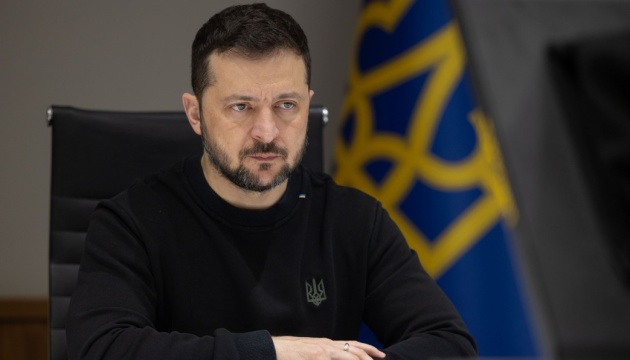


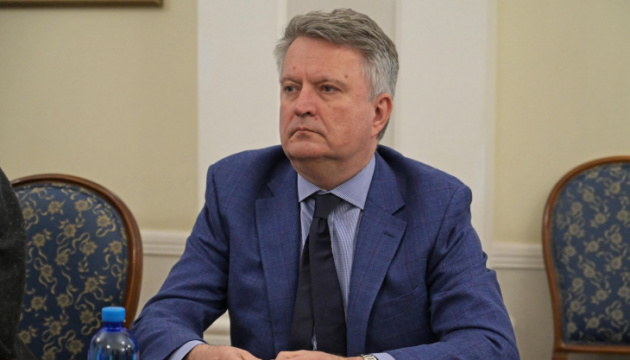
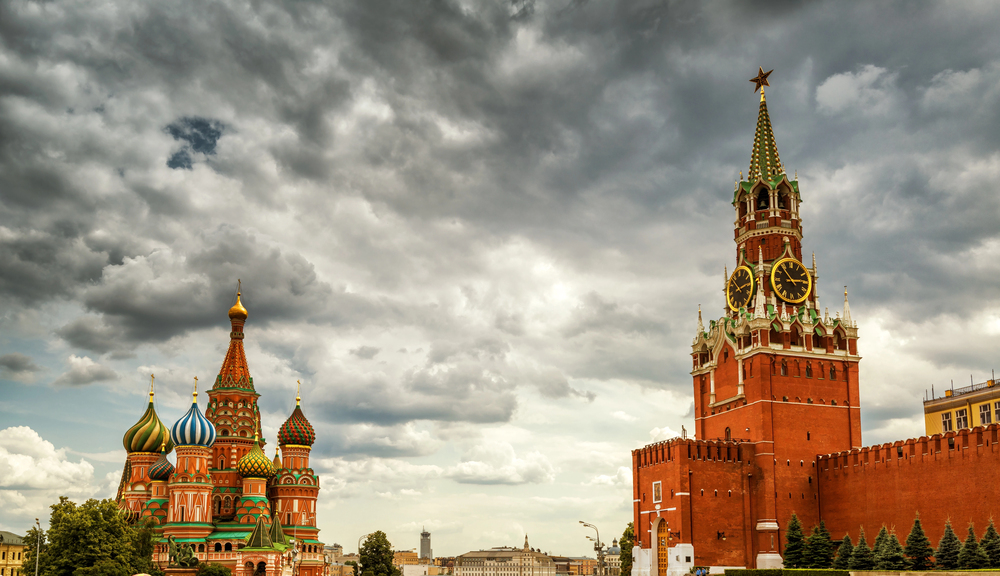
Russia threatens not only Ukraine. The Kremlin’s imperial ambitions also target Moldova, Georgia, Kazakhstan, and Azerbaijan, Ukraine’s Defense Intelligence reports.
During the Soviet era, Kazakhstan, Moldova, Azerbaijan, and Georgia were under Moscow’s control and subjected to centralized governance. The Kremlin wants to unify all of these countries into one fellow state.
Andriy Yusov, a representative of the Ukrainian Defense Intelligence, states that Russia’s war against Ukraine is not only a struggle for Ukrainian independence but also a fight for the right of all peoples to live freely and choose their own path.
“Ukraine defends the idea of integration into the European Union and pays a high, heavy price for it,” Yusov says, highlighting the European and democratic dimension of the conflict.
Yusov warns that Russia’s imperial ambitions pose a danger not only to Ukraine but also to neighboring states: Moldova, Georgia, Kazakhstan, and Azerbaijan. Historical parallels and the Kremlin’s current policies indicate a desire to expand influence and control over its neighbors.
“Every missile, every drone destroyed by Ukrainians during the Russian aggression means that this arsenal will not be used against any peaceful country,” he adds.
The intelligence representative highly praised Azerbaijan’s position, which actively opposes Russian imperialism and demonstrates the capability to give a worthy response to aggressors.
Ukrainian-Azerbaijani relations significantly improved in 2024–2025 following a series of aggressive actions by Russia. In December 2024, Russian forces shot down an Azerbaijani aircraft near Grozny, killing 38 passengers. Shortly afterward, Russia launched raids on its territory, resulting in the deaths of two Azerbaijani citizens. In response, Baku began openly strengthening ties with Kyiv.
This is an important signal for the entire region that free countries are ready to unite in resisting the common threat.
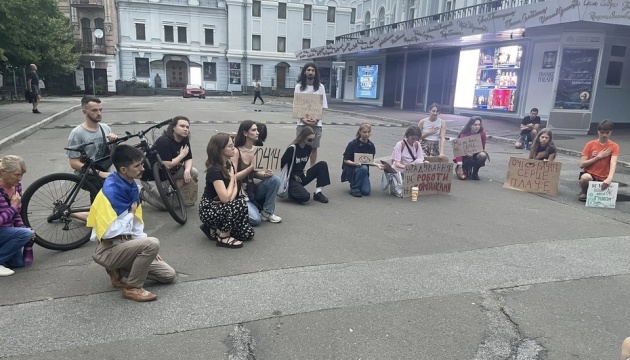
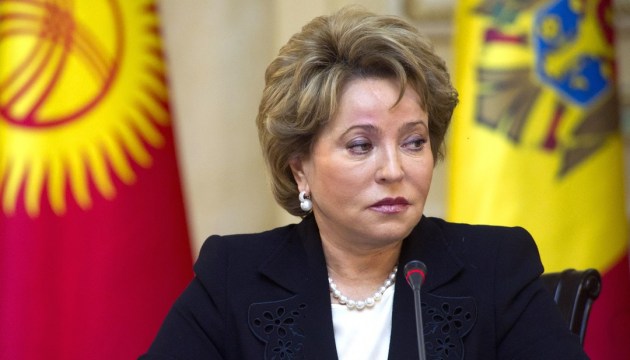
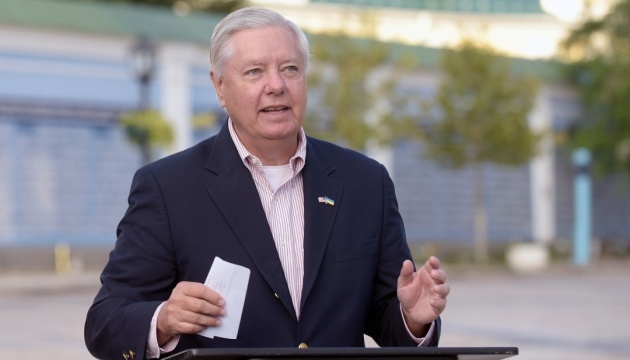
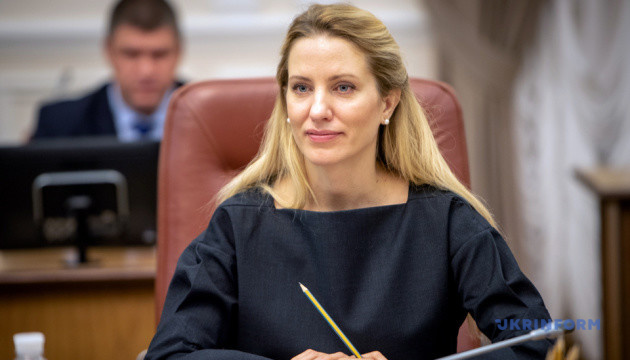
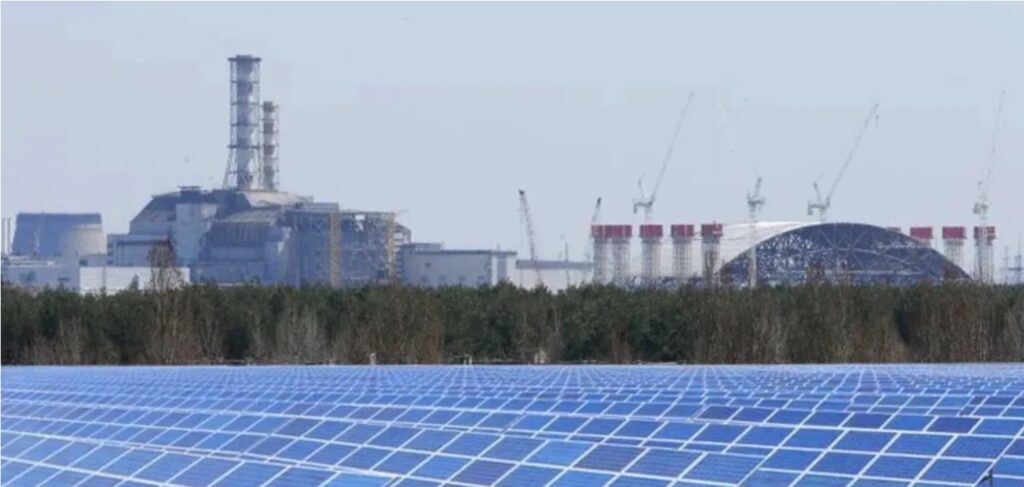
On 27 May 2024, a historic handshake in Madrid sealed a new chapter in Ukraine’s struggle for survival. That day, Ukraine and Spain signed a 10‑year bilateral security agreement, a pact that committed Spain to stand by Ukraine during its fight against Russia’s full‑scale invasion.
A year later, that signature has proved to be more than words. Spain has become one of Ukraine’s most consistent allies, delivering weapons, training thousands of soldiers, investing in rebuilding projects, and helping create legal mechanisms to hold Russia accountable.
In collaboration with the Dnistrianskyi Center, Euromaidan Press presents this English-language adaptation of Dariia Cherniavska’s analysis on Spain’s role in Ukraine’s defense, recovery, and pursuit of justice.
This agreement was not a one‑off act. It became the tenth in a series of security agreements Ukraine began after the G7 Joint Declaration of Support in 2023. By July 2025, Ukraine had signed 29 such agreements in total — 27 with G7‑aligned or European partners, one with the EU, and one with Croatia — all aimed at long‑term security cooperation.
Yet the Spanish pact stands out because of its broad scope.
Under this agreement, Spain committed to:
And in 2024 alone, Spain pledged €1 billion for military aid, aimed at strengthening Ukraine’s artillery, air defenses, armored forces, and maritime security.
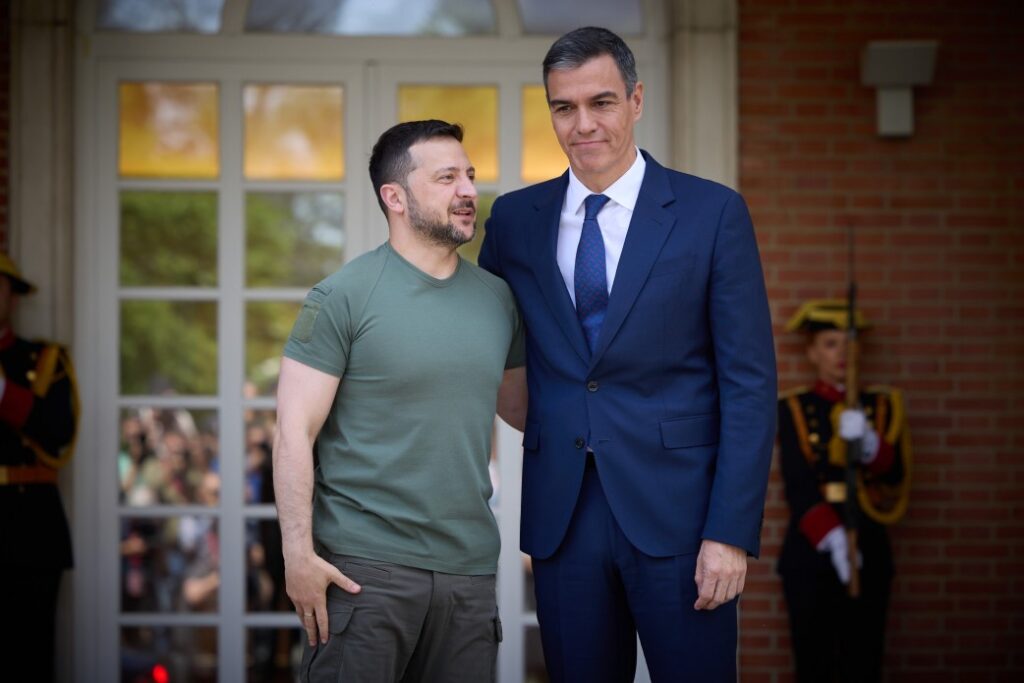
The first visible results came from the skies. In the spring of 2024, Spain sent batches of MIM‑104 Patriot missiles, strengthening Ukraine’s air defenses. Then in November, a full HAWK air defense battery – six launchers – arrived in Ukraine, designed to shoot down Russian missiles and drones.
On land, Spain has been no less active. Nineteen Leopard 2A4 tanks, once left unused in Zaragoza, were overhauled at the Santa Bárbara Sistemas plant. Ten of them were delivered to Ukraine in July 2024, with the rest planned for September.
Since the beginning of the full‑scale war, Spain has repaired and modernized 29 Leopard tanks for Ukraine and provided M113 armored personnel carriers. Between May 2024 and May 2025, Spain also delivered 155‑mm artillery shells, counter‑drone systems, surveillance optics, and modern combat turrets, giving Ukraine more tools to defend itself.

Spain’s assistance has not stopped with shipments. It is also helping Ukraine develop the capacity to produce and modernize its own weapons.
The Leopard tanks overhauled in 2024 are one example. At the same time, Ukrainian armored vehicles – including the Kozak‑5 – were equipped with Guardian combat modules from Spanish company Escribano Mechanical & Engineering.
In May 2025, Ukroboronprom signed a memorandum with Escribano to jointly develop weapons and localize Spanish module production inside Ukraine. Another partnership followed: Ukrainian company Praktyka signed an agreement with Spain’s Tecnove to begin licensed production of Dzura and Kozak armored vehicles in Spain, opening access to the European market.
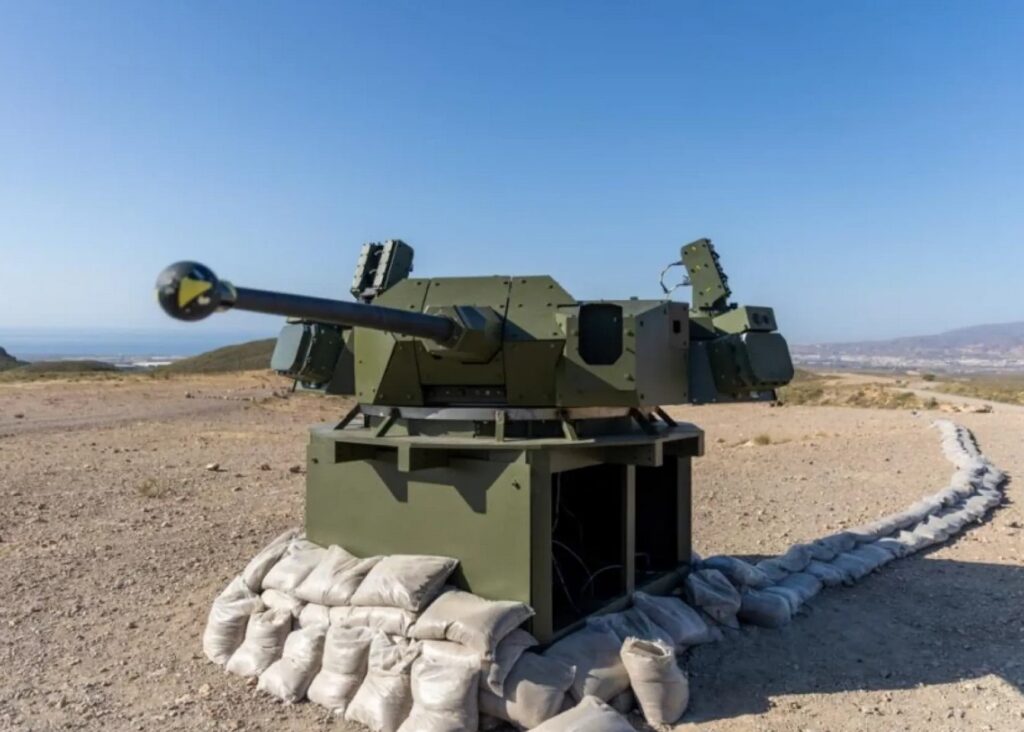
Support has also come through the European Union, where Spain, together with other EU members, takes part in the collective effort to redirect profits from frozen Russian assets to Ukraine.
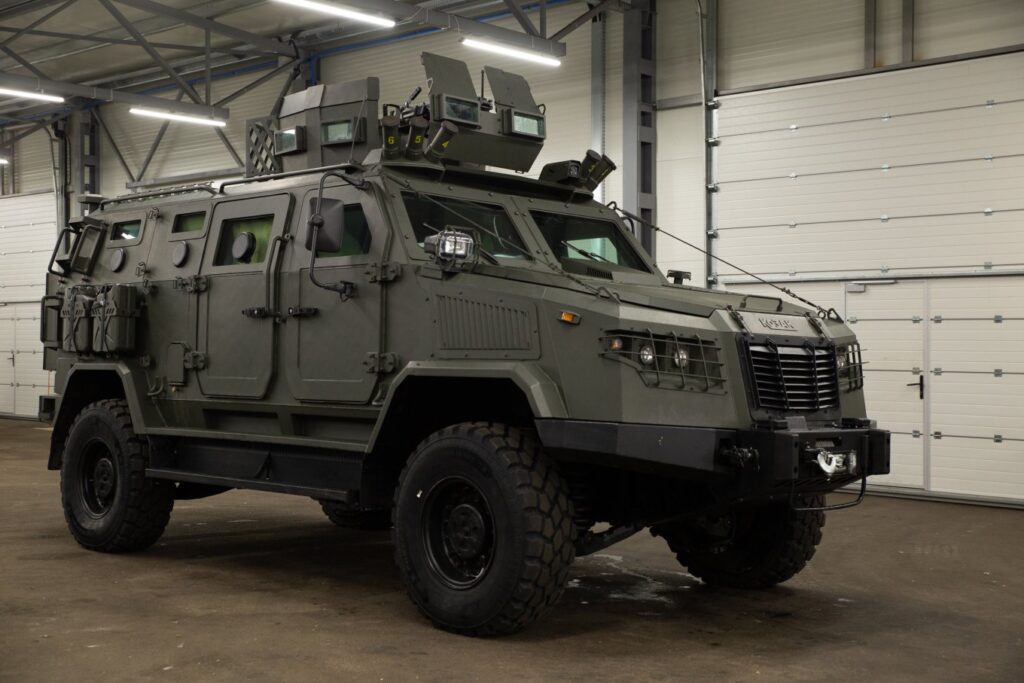
Weapons and funding are critical, but training saves lives. Spain is part of the EU’s EUMAM mission, which has already trained more than 75,000 Ukrainian soldiers. About 7,000 of them have trained in Spain.
There, soldiers learn to operate Patriot and HAWK air defense systems, maintain artillery, and master combined‑arms tactics. Most of these programs are run at the Toledo Training Coordination Centre (TTCC).
Beyond air defense, Spain has also been training Ukrainian troops on the very equipment it has supplied since the start of the full‑scale war — from OTO Melara Mod 56 towed howitzers and Aspide air defense systems to M113 armored personnel carriers and Leopard 2A tanks.
In March 2025, Ukraine and Spain signed a new agreement to expand training, ensuring more soldiers will benefit from Spanish expertise.
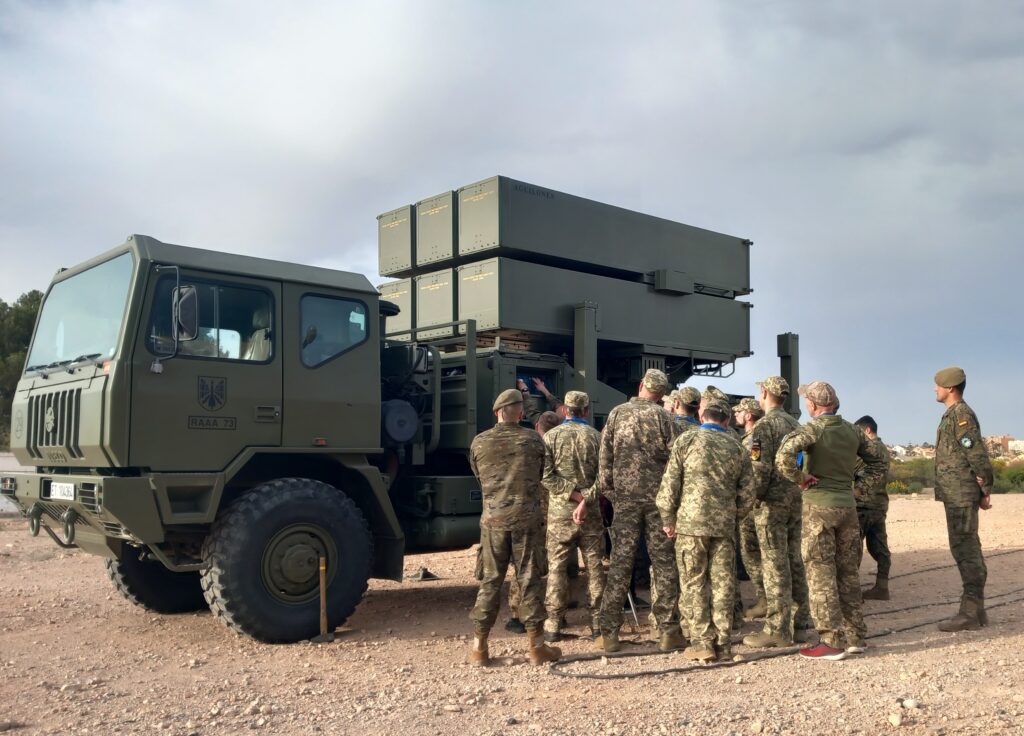
While the frontlines define much of this partnership, Spain has been active on other fronts too:
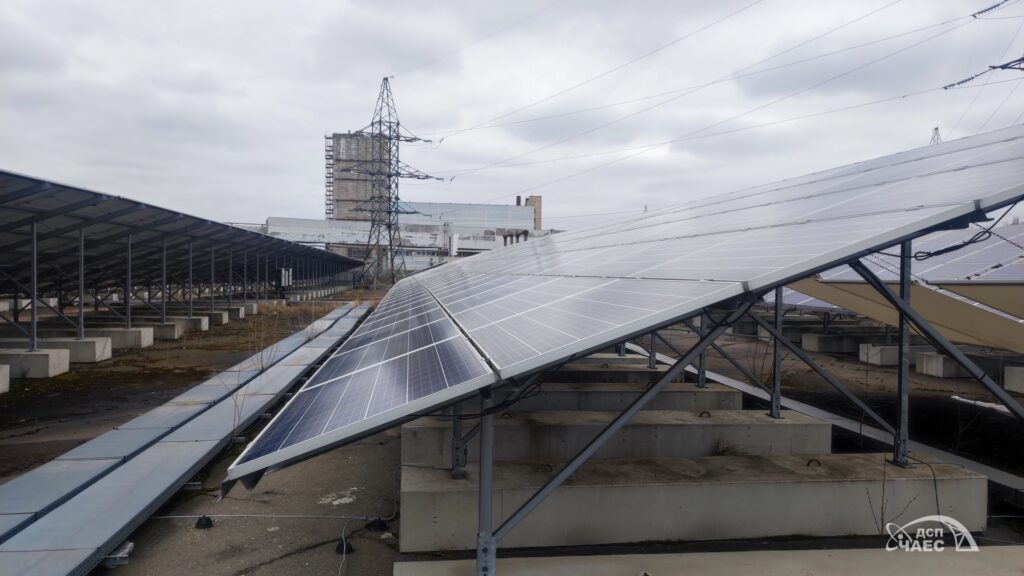
Spain has also joined two major international coalitions. The first led to the June 2025 signing of an agreement between Ukraine and the Council of Europe to establish a Special Tribunal for the Crime of Aggression. Once it begins work in 2026, the tribunal will be able to prosecute 20–30 senior Russian and Belarusian leaders, including Vladimir Putin, even in absentia.
The second coalition focuses on the return of deported Ukrainian children; in 2024, nearly 600 children were brought home through these joint efforts.
From Patriot missiles to solar power, from tanks to hospitals, Spain’s support has been comprehensive and steady.
One year after that handshake in Madrid, Spain has gone far beyond promises. Its help now shows in the skies above Ukraine, on the ground in training centers, in rebuilt power plants, and in the return of Ukrainian children.
It is a partnership built on solidarity – a partnership that continues to shape Ukraine’s resilience and its hope for victory and peace.

Technology is Ukraine’s chance to win the war. This is why we’re launching the David vs. Goliath defense blog to support Ukrainian engineers who are creating innovative battlefield solutions and are inviting you to join us on the journey.
Our platform will showcase the Ukrainian defense tech underdogs who are Ukraine’s hope to win in the war against Russia, giving them the much-needed visibility to connect them with crucial expertise, funding, and international support. Together, we can give David the best fighting chance he has.
Join us in building this platform—become a Euromaidan Press Patron. As little as $5 monthly will boost strategic innovations that could succeed where traditional approaches have failed.
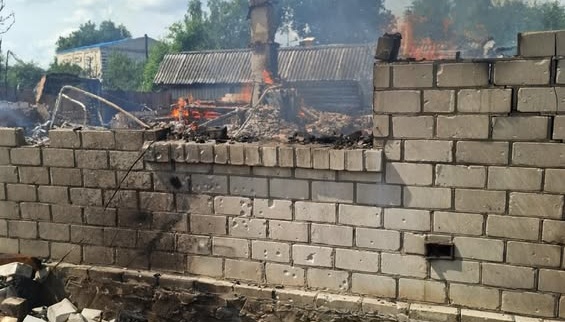
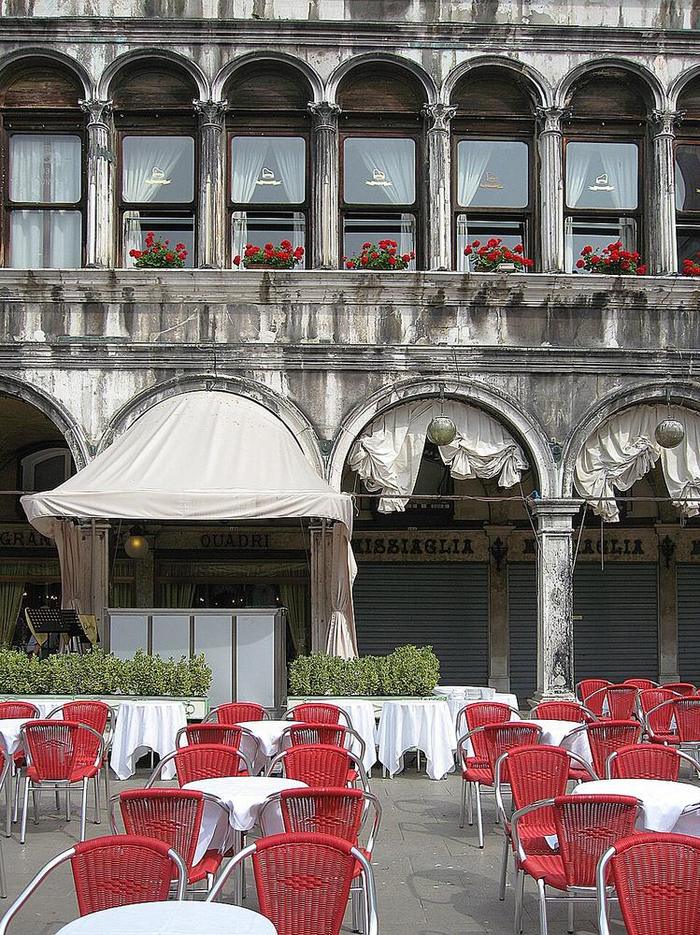
The Russians are continuing to vacation while war rages on. As Russian missiles rain down on Ukrainian cities, Russian citizens are sunbathing undisturbed on the beaches of France, Italy, and Spain, The Telegraph reports.
As of late July 2025, approximately 74% of Russian citizens support the war, while 24% say they want to launch a nuclear missile strike on Ukraine.
Despite Russia’s all-out war against Ukraine and ongoing sanctions, Europe continues to welcome Russian tourists. Overnight stays by Russians in French and Italian hotels rose by 19% over the past year.
These countries, both NATO and EU members, are still opening their doors to citizens of the aggressor state.
“In the fourth year of Russia’s war of aggression against Ukraine, it is extremely surprising to see statistics showing an increase in the number of visas issued to Russian citizens,” emphasized Ukraine’s Ambassador to the EU, Vsevolod Chentsov.
France, a member of the “Coalition of the Willing” and an active supporter of Ukraine, is in no hurry to restrict tourist flows from Russia. Along with Italy, it advocates keeping borders open, at least for “wealthy Russians.”
Russia does not intend to end its war against Ukraine. On the contrary, Russian ruler Vladimir Putin has told US President Donald Trump that military actions will escalate during the summer offensive. In the first half of 2025, Russia killed or injured 6,754 civilians in Ukraine, the highest number for a six-month period since 2022, the UN reports. In June 2025 alone, the UN documented 232 civilian deaths and 1,343 injuries, marking the highest monthly casualty toll in three years.
“There are many Russians who support the war, and particularly the Russians who have money. What we absolutely don’t want to do is allow these Russians to enjoy the privileges and resources of Europe, while at the same time they’re supporting Putin’s war efforts,” said financier and anti-Putin activist Bill Browder.
Experts believe that access for Russians is not only morally questionable but also a security risk. Browder calls for a ban on entry for Russian citizens unless they can prove they oppose Putin’s regime.
He stressed that denying visas can pressure the Putin regime and reduce the security threat posed by Russia’s hybrid war against the West.
Despite a ban on direct flights, dozens of travel routes between Russia and Europe still operate via Türkiye, Georgia, and Serbia. Meanwhile, Ukraine pays in blood for every day of freedom, as Europe hosts those who support the aggressor.

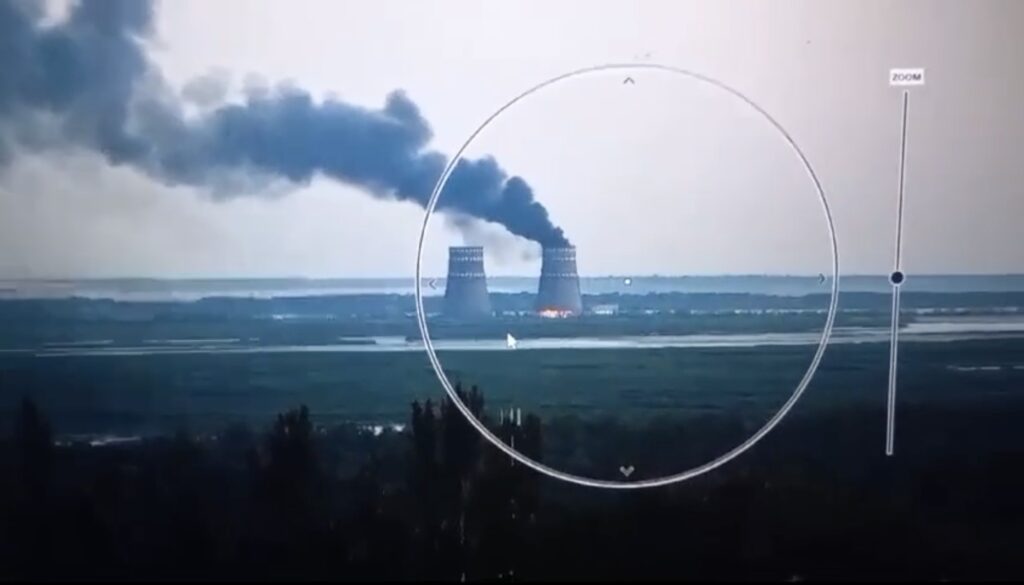
Russian ruler Vladimir Putin is blackmailing all of Europe by keeping the Zaporizhzhia Nuclear Power Plant under his control, Forbes reports. This warning comes from British expert Simon Bennett of the University of Leicester, author of the Atomic Blackmail? The Weaponization of Nuclear Facilities During the Russia-Ukraine War book.
When Russia launched its full-scale war against Ukraine, one of the first things it did was the occupation of the Chornobyl Nuclear Power Plant. It was liberated in 2022. However, Moscow troops targeted it with drone, damaging the protection over the plant. The Kremlin also captured the Zaporizhzhia Nuclear Power Plant, the largest in Europe. The station has enough capacity to cover the annual electricity needs of countries like Ireland, Slovakia, or Finland.
According to Bennett, Russian occupiers could rig the Zaporizhzhia plant with explosives and, if Putin is defeated, remotely detonate its six reactors. This would create radioactive fallout clouds that would quickly spread across Europe.
“As demonstrated by the 1986 Chernobyl meltdown and radionuclide release … plumes of radioactive debris can travel many hundreds of miles,” he told the journalists.
He recalls that radiation then reached as far as England, contaminating agricultural lands.
Moreover, Kremlin control over the plant poses a threat to Russia itself.
“Should any of Ukraine’s nuclear power plants be hit, even the plants in the far west of the country, there is a real possibility that, if there were a persistent westerly wind, the plume would reach Russia’s heartlands,” Bennett warns.
The expert also cautions that Russia’s military operations around nuclear plants may foreshadow tactics in a future war with NATO. He notes that the Kremlin might deploy “sleeper agents” to undermine Western infrastucture. These are spies with fake documents already embedded in the critical infrastructure of Western countries.
“I think it likely that Russia has in place sleepers across any state it considers hostile…which, of course, would include NATO member states,” Bennett concludes.
Earlier, Euromaidan Press wrote that Russian ruler Vladimir Putin shows no intention of abandoning his objectives in Ukraine or ending the war. Even under the threat of new sanctions, he appears ready to go to extremes to achieve victory.
“He will risk everything in Ukraine”: Putin may be preparing for even harsher war in Ukraine after Trump’s ultimatum

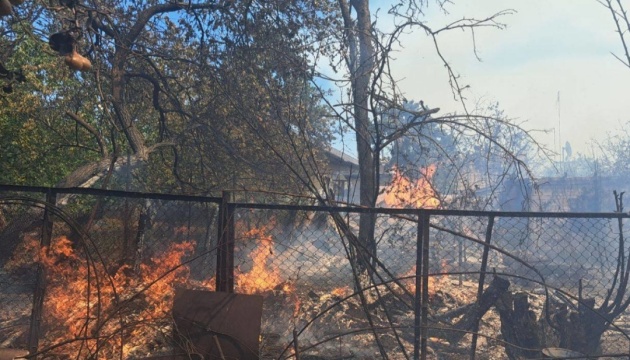

Belarus’s economy is stalling amid Russian stagnation. In the first half of 2025, Belarus’s economic growth sharply slowed, and its GDP increased by only 2.1%. Meanwhile, Ukraine’s Foreign Intelligence Service reports that inflation rose to 7.3%.
Belarus is effectively fully absorbed by Russia under the current leader, Alexander Lukashenko. The Kremlin has deployed permanent military bases in Belarus, including aviation forces. Minsk assisted in launching the war against Ukraine by allowing the use of its territory and also forcibly relocated civilians, including children, for re-education.
The slowdown is described as a “shock situation in agriculture”, with an annual decline of 8.1%, and reduced demand for Belarusian goods in Russia, which remains its key trading partner. Russia accounts for 60% of Belarus’s total trade turnover.
“Deliveries of consumer goods, equipment, and lumber to Russia have fallen by more than 70%,” the intelligence agency notes.
At the same time, exports decreased by 0.3%, imports rose by 4.7%, and the foreign trade deficit for the first four months of the year reached $856 million.
Industrial output grew by only 0.3%, mainly due to domestic demand. Russia’s economy is sliding into crisis (–4 % year-on-year in Q1), limiting its ability to support Belarus. This is happening amid Western sanctions and spending all of the available funding on its war against Ukraine.
“The worsening balance of payments increases the risk of a rapid devaluation of the Belarusian ruble,” the Ukrainian intelligence warns.
Western sanctions have removed Belarus from alternative markets, pushing it deeper into Russia’s financial and logistical orbit.
According to Ukrainian intelligence forecasts, Belarus’s economy will remain at a minimal growth level through the end of 2025, and in 2026–2027 may enter a new phase of crisis, marked by “declining household incomes and increased Russian economic control.”
Earlier, a poll showed 14% of Slovaks openly want to join Russia, and another 18% consider this possibility. The least support for the ideas of “neutrality” and “Russian integration” is observed among people with higher education, urban residents, and citizens with above-average incomes.
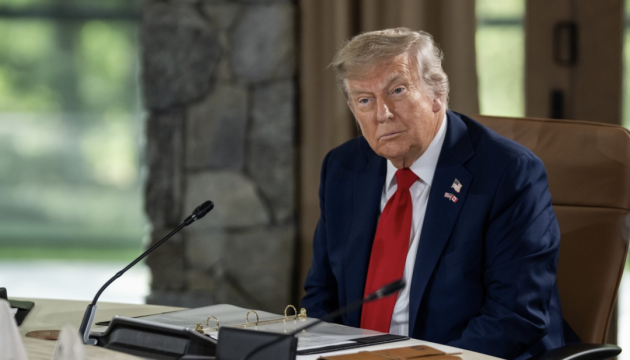

US President Donald Trump shortens Russian President Vladimir Putin’s deadline. Trump has given Russia a shortened timeframe of 10–12 days to agree to a ceasefire in Ukraine or face tougher sanctions, as his frustration with the Russian leader grows, according to the Financial Times.
Russia does not intend to end its war against Ukraine. On the contrary, Putin has told US President Donald Trump that military actions will escalate during the summer offensive.
Speaking Monday at his Turnberry golf resort in Scotland, Trump said he would move up the 50-day deadline he had previously set for Putin to avoid so-called “secondary sanctions.”
“I’m going to reduce that 50 days that I gave him to a lesser number. There’s no reason in waiting,” he added in a joint appearance with UK Prime Minister Sir Keir Starmer.
He said he want to be generous, but just does not see any progress being made. He made clear he doesn’t believe Putin will meet the demands within the original 50-day window.
“I’m not so interested in talking [to Putin] any more. Every time I think it’s going to end, he kills people,” Trump added.
In the first half of 2025, Russia killed or injured 6,754 civilians in Ukraine, the highest number for a six-month period since 2022.
Although Trump spent the first months of his presidency blaming Ukrainian President Volodymyr Zelenskyy for the war, his tone has recently shifted, especially after the US-Ukraine presidential meeting at the NATO summit just over a month ago.
On Monday, Head of the Ukrainian President’s Office Andrii Yermak welcomed Trump’s decision to shorten the ceasefire deadline, thanking him for “standing firm and delivering a clear message of peace through strength”.
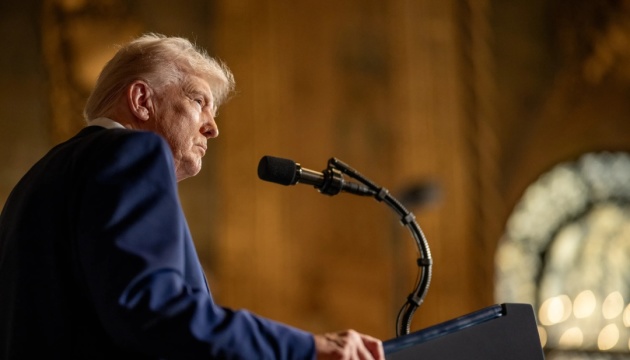

TSN channel has identified those responsible for the Olenivka terrorist attack in Donetsk Oblast, where over 53 Ukrainian soldiers were killed in an explosion staged by Russia.
In 2022, Russia killed 50 Ukrainian prisoners with a thermobaric weapon and, for a long time, spread the false claim that it was done by Ukrainians. Even the UN eventually acknowledged the lie, but only after years.
Experts at the TV channel have managed to identify four individuals involved in the terrorist act, three of whom were officially awarded military honors after the tragedy.
Likely initiators of the attack was Kostyantyn Popov, the head of the Federal Penitentiary Service (FSIN) group operating in Russian-installed illegal entitity in Donetsk Oblast. By identifying his subordinates, they were able to pinpoint three Russian soldiers.
Identified persons include:
All three were mentioned in an award document dated 1 August 2022, two days after the tragedy.
TSN experts were especially drawn to their specialty as instructor-demolition experts of assault units, who for unknown reasons were present at the barracks where the Ukrainian defenders later died.
Additionally, analysts from the Center for Human Rights in Armed Conflicts has recently reconstructed the events related to the Ukrainian POWs killings in Olenivka and established possible involvement of representatives of Russian security forces.
The first to report the mass death were Russian propaganda outlets, accusing Ukraine of striking with HIMARS rocket systems.
However, the experts, having studied open sources, photo and video materials, and eyewitness testimonies, concluded that the explosion in the so-called “barrack 200” was a premeditated act.
According to their findings, the strike on the building was carried out using tube artillery, and it came from the Russian forces.

A video news agency Viory that launched in Abu Dhabi claiming to represent the “Global South” is actually a rebranded version of Ruptly, the Berlin-based footage supplier that was part of Russia’s state media network RT, according to a new investigation by the Organization for Ukrainian Freedom (OFU).
According to the researchers, the transformation from Ruptly to Viory represents “as Russia’s adaptation to sanctions and isolation, using rebranding techniques to continue propaganda operations under the guise of independent Global South media representation.”
Russian propaganda in the Global South has existed in various forms since the Soviet era. It exploits local vulnerabilities such as anti-Western sentiment, post-colonial resentment, and economic hardships to discredit the West and Ukraine, while promoting Russia as a strategic partner. These campaigns have increased local support for Russia, fostered skepticism of Western policies, and led to political neutrality or alignment with Russia in international forums. For example, some African countries have refused to condemn Russia’s invasion of Ukraine at the UN and have called for stronger partnerships with Russia over the West.
Viory made its debut at the Abu Dhabi Global Media Conference in 2023, presenting itself as an independent company. However, the investigation, conducted by multiple outlets including RND and Tagesspiegel, using facial recognition software and LinkedIn analysis, has identified dozens of former Ruptly employees now working for the new agency.
Ruptly operated as a news agency dealing primarily in footage from its Berlin headquarters, running a global network of freelance video journalists who filmed events worldwide. The footage was sold to major outlets including the BBC, Daily Mail, and Al Jazeera, according to the investigation.
The transformation began after Germany’s Bild investigative team exposed Katerina Mavrenkova, Ruptly’s chief content officer, for requesting a Berlin-based journalist to “penetrate into Charité” hospital where Russian opposition figure Alexei Navalny was being treated following his poisoning.
“Mavrenkova, an employee of the Russian state, was asking the journalist to do espionage on the prominent critic of the Russian state,” said in the report.
Following Russia’s full-scale invasion of Ukraine, Ruptly faced a flood of staff resignations and intensified scrutiny from German authorities, necessitating relocation. The agency initially operated under Lensum, which Tagesspiegel identified as “a shell company for Ruptly’s continued operations,” citing an insider source.
According to OFU research, Lensum was initially known as Tocha and was founded by ELA Verwaltungs GMBH, a firm offering “ready-to-go” shelf companies for clients wanting to bypass bureaucratic procedures. The company was owned by Marina Sevciuc, who “has virtually zero online presence” and appears to be a placeholder owner, according to the investigation.
Despite denying connections to Ruptly or the Russian state, Lensum hired a head of human resources whose LinkedIn profile showed work experience at RT Germany.
The investigation identifies several key figures linking Ruptly to Viory. Mavrenkova, despite maintaining “a very low online presence,” signed an agreement on behalf of Viory in Riyadh with the Union of News Agencies of the Organization of Islamic Cooperation. She was later listed as “Director of Content of the international media agency Viory” at the 2024 Kazan Forum, a significant conference between the Russian government and the OIC.
Dinara Toktosunova, identified by German publications as the former CEO of Ruptly, also appeared as a panelist at the Kazan Forum in 2023, where she was described as “director of Ruptly.” A Google search anomaly shows her described as “director of international media agency Viory” in relation to the 2024 Kazan Forum, though she did not appear to participate in that year’s panels.
The investigation found that Viory’s content reveals its Russian state affiliation through several indicators. Videos about Ukraine refuse to use the term “war,” instead labeling content as “Donbas conflict” or “Russia-Ukraine conflict.” Ukrainian cities are spelled using “old, Russified spellings” rather than official transliterations, and Russian-occupied regions are referred to as “DNR” and “LNR” without the “self-proclaimed” qualifier used in pre-invasion content.
Viory’s exclusive content suggests extraordinary access to Russian officials and military operations. The agency published drone footage titled “Might of Moscow” showing Russian military equipment preparing for the 9 May 2024 Victory Day parade. The investigation said that “given the prevalence of small armed drones in the war in Ukraine, one can imagine it takes a high level of security clearance and trust to film such footage.”
The agency has published at least 352 videos under the “80th Victory Day Anniversary” tag and produced six exclusive videos from Putin’s June 2024 visit to North Korea. The investigation questions how “an apparently six-month-old Viory managed to pull this off” when “few international news agencies even have the capability to film in North Korea.”
Analysis of Viory’s coverage reveals “a significant bias in favour of Russia,” including exclusive footage of residents celebrating Russian control of Avdiivka and multiple exclusives from Wagner mercenary group activities. The agency also hosts “an enormous amount of Ruptly’s old content,” with footage matching exact headlines and scripts from Ruptly’s previous output.
The rebranding reflects Russia’s pivot toward the Global South following diplomatic isolation after the Ukraine invasion. EU-wide bans on Russian state media forced the search for new markets, with Viory’s tagline explicitly targeting “the video news agency of the Global South.”
The investigation said that Russia has been “expanding its presence over the last decade” in Africa, with Wagner mercenaries deployed to Russia-aligned states. Russian-linked disinformation campaigns have already been reported across the continent, including content featuring leaders like Ibrahim Traore, who “appears in dozens of videos on the Viory site.”
The investigation concluded that while Viory “evidently did a pitiful job of covering its tracks,” the operation demonstrates “an increasingly decentralized and diffuse Russian state approach to international messaging.” Unlike traditional Russian state media’s “overly incredulous or inflammatory rhetoric,” Viory presents content with “a veneer of objectivity” while maintaining the same pro-Kremlin narratives.
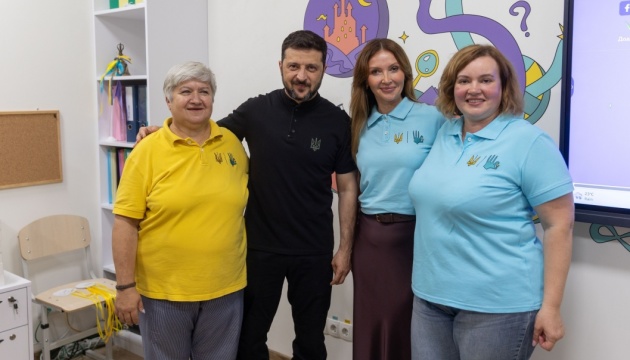

Trump has threatened to impose secondary sanctions on countries that purchase Russian oil if Vladimir Putin doesn’t end his three-year-old war on Ukraine

© via REUTERS

Russian companies are funneling billions of rubles into temporarily occupied Ukrainian territories under the guise of a “special infrastructure project,” according to InformPalm.
Russia is transforming occupied Ukrainian regions into military bases. Moscow troops use Donetsk and Luhansk oblasts to build up combat units and organize logistics hubs. Meanwhile, from occupied Crimea, Russian forces continue to launch missiles and drones at other Ukrainian cities.
The Kremlin allocates budget funds and transfers them to selected companies through classified contracts. Those companies create fictitious subcontractors and spend the money mostly on paper.
Actual construction is limited to minimal work done just for propaganda visuals. According to InformPalm, which accessed correspondence between Russian authorities and companies intercepted by the 256 Cyber Assault Group, this is a centralized program for distributing billions of dollars that end up in the pockets of Kremlin-connected business groups.
“The main goal is not regional development but financial support for the military presence and enrichment of pro-Kremlin businesses,” the investigation says.
Since 2022, Russia has forcibly applied the Crimea development model to newly occupied territories, boiling down to “money pumping, fictitious rebuilding, propaganda, and anonymity guarantees,” creating the illusion of progress.
“All resources are concentrated in Russian contractors formally not linked to their parent companies,” experts note.
Six Russian ministries are involved in this scheme, and the Ministry of Construction even created a special department to implement the project.
The 256 Cyber Assault Group published two lists (2022 and 2024) of 194 companies allowed to work in the temporarily occupied territories. These include both little-known shell companies and major players such as:
The mechanism is standard: a company receives a contract, keeps part of the funds, and passes the work to subcontractors. For example, SK Sirius, registered in Crimea, is liquidating after one year of operation.
Most workers are brought in from Russia, creating minimal load on the local economy. Propaganda uses this as proof of successful restoration.
Since 2014, this company has provided telecommunications infrastructure in the occupied territories, Crimea, and Donbas. The EU sanctioned it only at the end of 2023. However, its subsidiary Myrtelecom operated without restrictions for a long time.
Although sanctions have affected some companies, most operate openly, holding assets in Russia and partners abroad.
Striking these companies with sanctions could not only halt funding of military projects but also break corruption links within the system.
However, the Kremlin successfully conceals ultimate beneficiaries through chains of subcontractors and legally clean entities, complicating the enforcement of international restrictions.
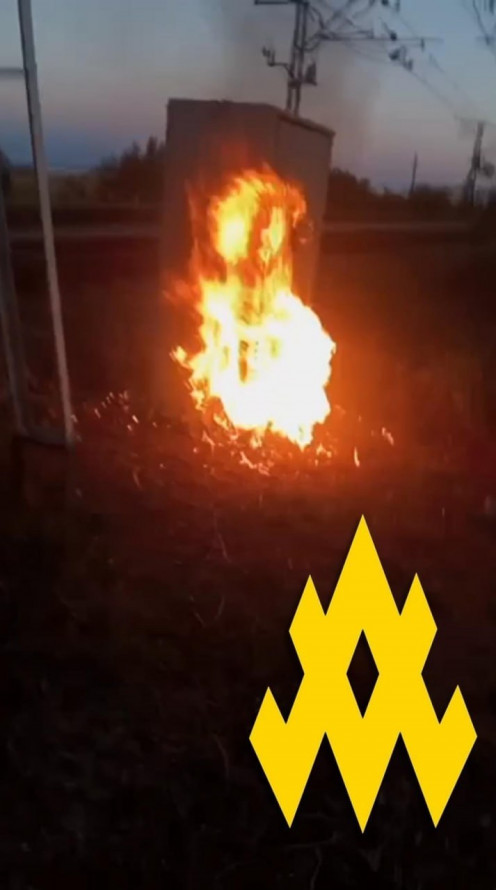
Ukrainian relay sabotage halts Russian supply line in occupied Ukrainian territories. Partisans from the Atesh resistance movement carried out a sabotage operation in Russian-occupied Kherson Oblast, blowing up rail infrastructure crucial for enemy logistics on the Zaporizhzhia front.
Atesh, formed in September 2022 following the start of Russia’s all-out war against Ukraine, claimed to have developed a network of agents within the Russian military. They have also established training courses to instruct Russian soldiers on how to damage their equipment.
“A member of the Atesh movement operating deep behind enemy lines conducted a successful sabotage along the railway between Safonove and Novooleksiivka,” the partisans report.
A relay cabinet was damaged, paralyzing the movement of ammunition and fuel trains toward Melitopol, a key logistics hub for Russian forces in Zaporizhzhia Oblast. Moscow troops control nearly 70% of the region, except for the main city – Zaporizhzia.
Russian-occupied Melitopol is gripped by a humanitarian crisis, with water and power outages, drone strikes on high-voltage equipment, mass raids, and repression against locals, according to Glavcom.
Despite this, the residents refuse to back down, memorial events continue in the city, such as those marking the anniversary of the Olenivka tragedy.
“Ah, this one’s dead? Good,” said Russian Olenivka prison chief — and continued sipping coffee
Fighting remains intense, with over 500 Russian attacks reported in a single day, including airstrikes on Stepnohirsk and Novoandriivka, hundreds of drone strikes, and artillery barrages. Ukrainian forces hold the line, especially around Orikhiv, where they continue to repel assaults, says Ivan Fedorov, the region’s head.
The greatest risk in the region remains the Zaporizhzhia Nuclear Power Plant. Due to ongoing shelling of power lines, the facility is frequently forced to switch to diesel generators, posing a real danger of disaster.
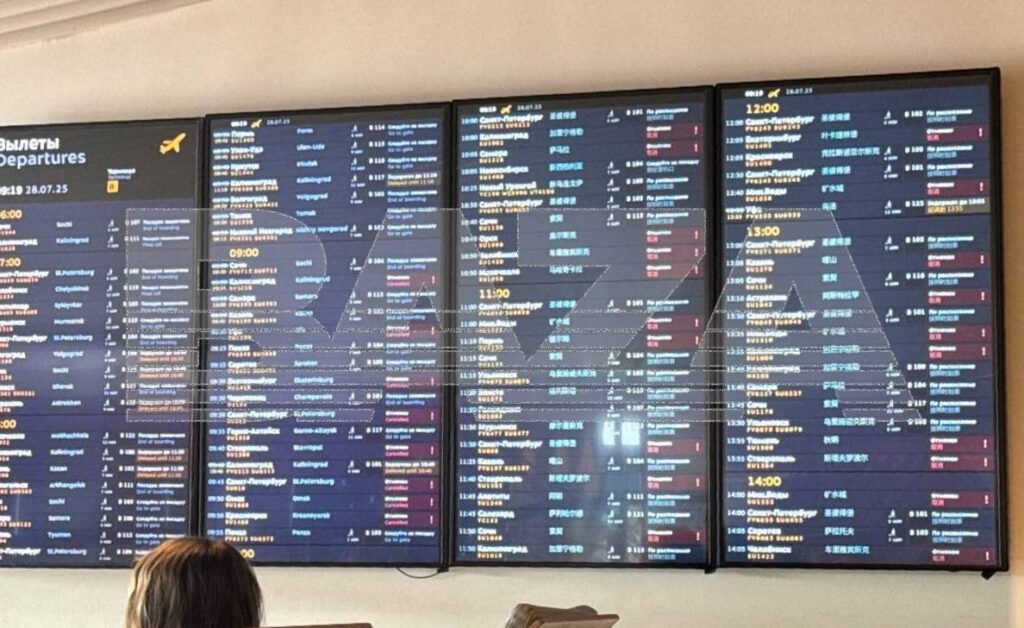
Pro-Ukrainian hackers launched a devastating cyberattack against Aeroflot, Russia’s government-owned flagship airline, canceling 50 flights and leaving hundreds of passengers stranded at Moscow airports on 28 July.
Two hacker groups claimed responsibility for a cyberattack that allegedly destroyed the carrier’s internal IT infrastructure.
The flight disruptions affected routes from Moscow’s Sheremetyevo airport to destinations including Minsk, Yerevan, Yekaterinburg, Kaliningrad, and St. Petersburg.
Chaos erupted at Moscow’s Sheremetyevo airport as hundreds of frustrated Aeroflot passengers found themselves trapped in a digital nightmare. After waiting hours for flights that would never depart, travelers discovered they couldn’t even leave the airport easily—bottlenecks formed at exit passages, forcing people to stand in line just to get out of the building.
Traffic jams clogged roads outside as passengers abandoned their travel plans en masse, with many unable to secure refunds since the airline’s systems were down and only call centers could process requests.
According to Russian Telegram channel Baza, the scene resembled a mass evacuation as Aeroflot representatives urged people with canceled flights to simply go home rather than wait at the airport, leaving travelers stranded with no clear timeline for when normal operations might resume or whether their money could be recovered.
Anti-Russian groups Silent Crow and Belarusian Cyber Partisans BY claimed they spent a year infiltrating the airline’s network before destroying approximately 7,000 servers, explicitly linking their attack to Russia’s war against Ukraine and signing off with “Glory to Ukraine! Long live Belarus!”
The hackers say they accessed 122 hypervisors and 43 virtualization systems. They allegedly copied 12 terabytes of flight databases, 8 terabytes of corporate files, and 2 terabytes of email. Personal data of every Russian who ever flew Aeroflot? Gone, according to their statement.
“All these resources are now inaccessible or destroyed, restoration will require possibly tens of millions of dollars. The damage is strategic,” the hackers stated in their message.
The attack’s immediate impact was evident in Aeroflot’s operations. According to Baza’s source within the airline, employees could not access flight plans, contact crew members, or determine aircraft locations.
One Aeroflot employee described the scene: “I came to work, but we can’t print flight plans, nobody knows anything. I can’t even find the crew number, can’t call the captain.”
The employee continued: “All planes are grounded, management knows nothing: where the plane is, who’s flying, where they’re flying, crew numbers. There’s absolutely nothing.”
Only flights with pre-calculated plans could depart. Everyone else waited. Some crews spent hours sitting in aircraft with no instructions. Many employees were simply sent home.
Russia’s General Prosecutor’s Office confirmed the disruption was a cyberattack, not technical failure, as the hackers promised to publish stolen personal data from every Russian who ever flew the country’s largest airline.
Pro-Ukrainian hackers brought down Russia's largest government-owned airline system on 28 July.
— Euromaidan Press (@EuromaidanPress) July 28, 2025
The hackers signed off their cyberattack with "Glory to Ukraine! Long live Belarus!"
The attack forced the cancellation of around 50 Aeroflot flights and left hundreds of… pic.twitter.com/Rxzy3Lgjgw
Here’s what makes this attack different: The hackers claim they maintained access for an entire year before striking. That’s not opportunistic hacking—that’s patient intelligence work. They allegedly penetrated what they call “Tier0” systems, the core infrastructure that keeps airlines running.
Why target an airline? The hackers were explicit. Their statement addressed Russian security services directly: “You are incapable of protecting even your key infrastructures.” They called it a message to “all employees of the repressive apparatus.”
The groups signed off with “Glory to Ukraine! Long live Belarus!”—making their allegiances clear.
The attack occurred as Russia’s aviation sector already struggles under international sanctions and limited access to Western aircraft and parts. Adding cyberattacks from Ukraine-aligned groups to that list creates a new vulnerability Moscow hadn’t fully considered.
